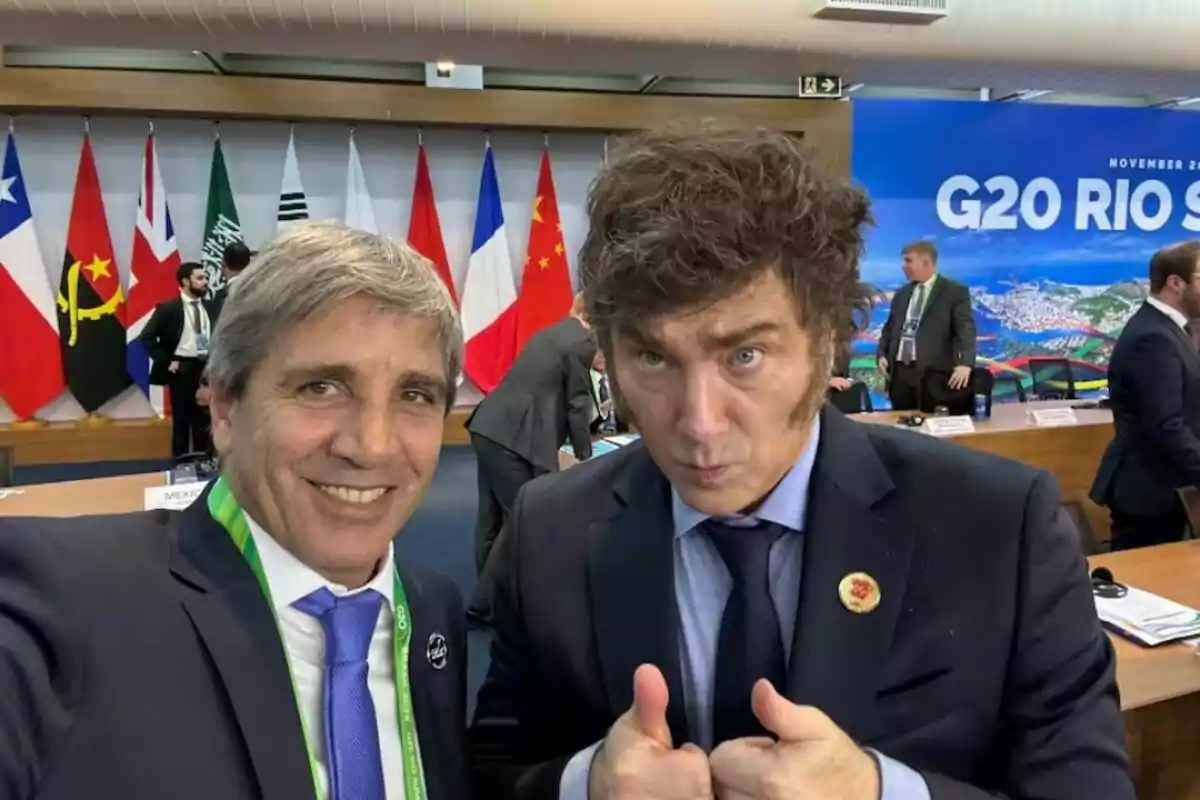
Javier Milei's government announced the end of the currency controls
The economic team will hold a press conference at Casa Rosada
The Government of Javier Milei announced the approval of the new agreement reached with the International Monetary Fund and the end of the currency control. It was through a press conference led by the economic team, headed by the Minister of Economy, Luis "Toto" Caputo. With this announcement, the phase 3 of the economic program began, which consists of the recapitalization of the Central Bank.
The board of the International Monetary Fund (IMF) was analyzing a loan under the Extended Fund Facility program for an amount of 20 billion dollars intended for Argentina. According to reports, there will be an initial disbursement of USD 15 billion, something much higher than market projections.
In total, Milei's Government expects to receive up to USD 21.3 billion this year between the IMF's disbursement, loans from private banks with the monetary authority, and international organizations.
These funds would be used to strengthen reserves, acquire non-transferable notes issued by the Central Bank, begin to dismantle the currency control, and face the capital debt maturities with the international organization, which will start operating from mid-2026.
Meanwhile, the Central Bank of the Argentine Republic (BCRA) reported that it will lift the dollar control and implement a currency band scheme.
"The Central Bank of the Argentine Republic (BCRA) initiates Phase 3 of the economic program started on December 10, 2023. In this new stage, (i) the dollar exchange rate in the Free Exchange Market (MLC) may fluctuate within a moving band between $1,000 and $1,400, whose limits will expand at a rate of 1% monthly, (ii) the blended dollar is eliminated, exchange restrictions on individuals are removed, the distribution of profits to foreign shareholders is allowed starting from the financial years beginning in 2025, and the deadlines for the payment of foreign trade operations are relaxed," the entity communicated.
They also explained that "the nominal anchor is reinforced by perfecting the monetary policy framework in which there is no issuance of pesos by the BCRA for financing the fiscal deficit or for the remuneration of its monetary liabilities."
In the press conference, the Minister of Economy, Luis Caputo, stated that the agreement "will allow starting Monday to end the currency control, which has done so much damage and was imposed in 2019 and affects the normal functioning of the economy."
In his speech, Luis Caputo presented an image on the "Results of the stabilization plan" of Milei's Government. Among the main achievements are:
- Elimination of the fiscal deficit in the first month: 5% GDP.
- Elimination of the quasi-fiscal deficit (10% GDP) and monetary issuance in 7 months.
- Solution to the commercial debt problem of USD 50 billion.
- Reduction of the gap: 200% to 25%.
- Reduction of country risk: 2,700 points to 900 points.
- Growth of activity: 6% Dec-23 to Dec-24.
- Reduction of inflation: 25.5% Dec-23 to 2.4% Feb-25.
- Pensions +12.8% and registered private real salary +13.7% between Dec-23 and Dec-24.
- Reduction of poverty: 10 million people.
On the other hand, the Central Bank reported that currency restrictions for individuals are lifted. From now on, the cap of USD 200 for the purchase of the official dollar will no longer apply, and all obstacles that weighed on those who received state aid during the pandemic, subsidies, public employment, among others, are removed.
Both the limitations established in Communication A 7340 and the so-called cross restriction will no longer apply to individuals. This enables access to the official exchange rate even for those operating in financial markets. Perceptions on the purchase of foreign currency will not apply, except in cases of acquisition for tourism or card expenses abroad, where perceptions will remain in effect.
Additionally, the Central Bank indicated that the official exchange rate will operate under a floating scheme within currency bands, allowing the dollar to move "freely" between $1,000 and $1,400. "Within these margins, the dollar's value will adjust according to market supply and demand. The lower and upper limits of the band will be updated gradually and predictably, at a rate of -1% and +1% monthly, respectively," they detailed.
When the exchange rate is at the minimum value within the Free Exchange Market (MLC), the Central Bank will intervene by buying dollars to sustain the floor of the band, while accumulating international reserves. Conversely, if the exchange rate reaches the ceiling of the band, the monetary authority will sell dollars to maintain the value within the range and reduce monetary liabilities.
More posts: